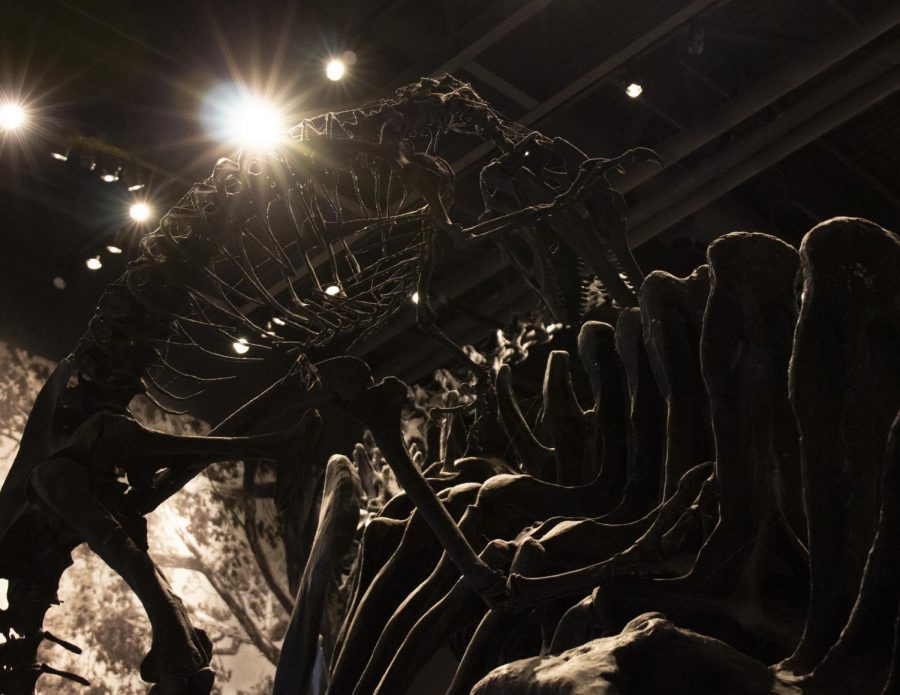Old Bones, New Discoveries at the Natural History Museum of Utah
Dinosaur fossils at the Natural History Museum of Utah. (Photo by Hailey Danielson | The Daily Utah Chronicle)
February 20, 2020
The Natural History Museum of Utah, situated in the foothills just above the University of Utah, announced on Jan. 24 that a new species of dinosaur was officially named the Allosaurus jimmadseni.
The first part of the name, Allosaurus, translates to “different reptile” and refers to a group of bipedal dinosaurs with long tails and three fingers on each claw. The second part of the name, jimmadesni, was chosen as a way to honor James H. Madsen Jr., Utah’s first state paleontologist and former researcher at the U.
“[Jim Madsen] dug up more bones of Allosaurus than anyone else in history. … From World War II up until the late ’90s, Jim Madsen knew more about Allosaurus than anyone in the world,” said Mark Loewen, associate professor and lecturer in geology and geophysics at the U.
Loewen is also a resident research associate at the Natural History Museum of Utah. He and his colleague Daniel Chure studied the skulls of the Allosaurus and observed differences between them.
“Allosaurus is kind of an iconic fossil,” Loewen said.
Loewen came to the U for his doctorate dissertation, where he studied one of the largest collections of Allosaurus bones in the world, a collection that had previously not been studied.
“As we were looking at those, I started to recognize differences between different individuals, differences between different populations, differences between different species, and that is pretty much what turned me on to the idea that there is this new species and there are several different skeletons of this Allosaurus that actually belonged to the earlier species,” Loewen said.

Loewen discussed the day-to-day process of studying Allosaurus bones as a focused analysis of the minute differences between the different skulls, such as little bumps and muscle scars.
“A lot of our dinosaurs will seem really similar to another species and it will be really small details — things like muscle attachments or number of teeth — that clue us into the fact that it is actually a different species. A lot of times those things go unnoticed for a few years because they can look really similar if you don’t analyze it with a really detailed eye,” said Savhannah Carpenter, a junior studying in the U’s geology department. Carpenter is also one of Loewen’s research students, primarily focusing on herbivorous dinosaurs.
“A lot of people 150 years ago named a dinosaur just based on a single bone. … As we learn more, we have learned to think about an animal as an entire skeleton and how these features on that skeleton vary between different individuals within a population,” Loewen said.
In terms of determining new species, it all comes down to the question: “What variations are meaningful?” Loewen said.
After this exciting contribution to the field of paleontology and the history of Utah itself, Loewen and Carpenter are not slowing down.
“We are actively working to try to name several new species that have come from Southern Utah in Grand Staircase Escalante National Monument. Probably the next two species named will be two horn dinosaurs,” Loewen said.
Carpenter is also excited about the future of paleontology. “In the ’80s and ’90s they were only finding a handful of new dinosaurs every year, but for the last decade or so we have actually been finding on average about 50 new species of dinosaurs around the world every year, which is really exciting,” she said.
“I think that number is going to keep going up with more and more people going into science, which is really neat,” Carpenter said.










